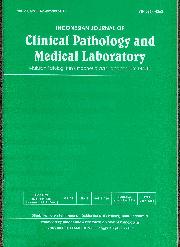Indonesian Journal of Clinical Pathology and Medical Laboratory
ISSN 0854-4263
Vol. 21 / No. 1 / Published : 2014-01
Order : 17, and page :90 - 95
Related with : Scholar Yahoo! Bing
Original Article :
Vitamin d deficiency and diseases
Author :
- Pusparini*1
- Bagian Patologi klinik Fakultas Kedokteran Universitas Trisakti
Abstract :
It has been estimated that deficiency and insufficiency of Vitamin D affect one bilion people worldwide. Vitamin D deficiency can be found not only in countries with four (4) seasons, but also in countries with sunlight exposure all year long The objective of this study was to know whether vitamin D deficiency can occur in Indonesia as well and to explore the role of vitamin D in people‘s health, although Indonesia is a country in the equator region. To avoid long term negative health consequences 25 hydroxyvitamin D/25 (OH) D serum level should be between 30 and 100 ng/mL. The main source of vitamin D is by synthesis at the skin which is exposed to ultraviolet B radiation. The other source of vitamin D is from food. There are a lot of causes of vitamin D deficiency, for example: decreased vitamin D synthesis, nutritional intake of vitamin D, maternal vitamin D stores and exclusive breastfeeding, mal absorption and decreased synthesis or increased degradation of 25 (OH) D. From the above factors, decreased vitamin D synthesis is the main cause of vitamin D deficiency. The vitamin D deficiency is estimated and plays an important role in multiple disorders, such as: osteoporosis, fracture, cancer, cardiovascular disease, diabetes mellitus, autoimmune disease and infectious disease. A good strategy in managing vitamin D deficiency is needed in order to solve the related problems. Defisiensi dan ketidak-cukupan vitamin D di dunia diperkirakan menimpa satu (1) juta penduduk. Defisiensi vitamin D tidak hanya dijumpai di negara dengan empat (4) musim, tetapi juga dijumpai di negara dengan pajanan sinar matahari sepanjang tahun seperti di negara Indonesia. Tujuan penulisan makalah ini adalah untuk mengetahui bentuk ancaman defisiensi vitamin D dengan menelaah kajian dan telitian mutakhir, walaupun Indonesia merupakan negara yang terletak di katulistiwa. Penjelasan tersebut juga dapat menimbulkan pengetahuan kewaspadaan bagi penduduk wilayah tersebut mengenai dampaknya, selain dapat mengetahui dan membahas peran vitamin D bagi kesehatannya. Kadar 25 hidroksi vitamin D/25 (OH) D di dalam darah yang dianjurkan berkisar antara 30−100 ng/mL untuk menghindari gangguan kesehatan. Sumber utama vitamin D adalah pembuatan di kulit yang terpajan sinar ultraviolet B. Sumber vitamin D lainnya adalah dari makanan. Faktor penyebab defisiensi vitamin D bermacam-macam, antara lain penurunan: pembuatan vitamin D, asupan vitamin D dan cadangan vitamin D, pemberian ASI khusus, malabsorbsi dan hal yang terkait pembuatan atau peningkatan kemunduran 25 (OH) D. Kelima faktor tersebut yang terkait penurunan pembentukan vitamin D, adalah merupakan hal yang paling berpengaruh terhadap kejadian defisiensi vitamin D. Defisiensi vitamin D diperkirakan berhubungan dengan berbagai penyakit, antara lain: osteoporosis, fraktur, keganasan, serta penyakit: kardiovaskular, diabetes melitus, autoimun dan infeksi. Keberadaan penyakit/kelainan tersebut diperlukan siasat yang tepat untuk mengatasi defisiensi vitamin D.
Keyword :
25 (OH) D deficiency, UV-B exposure, cardiovascular disease, diabetes mellitus,
References :
Kauffman JM,(2009) Benefits of vitamin D supplementation vol. 14, Hal: 38-45. : J. of Am Phy Surg
Holick M.,(2007) Vitamin D deficiency Vol. 357 Hal: 266– 81 : N Eng J Med
Archive Article
| Cover Media | Content |
|---|---|
 Volume : 21 / No. : 1 / Pub. : 2014-01 |
|













